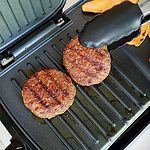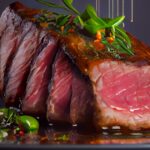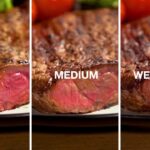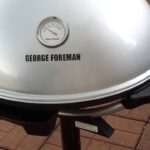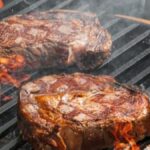How to Use George Foreman Grill: Tips and Techniques from a Chef
The George Foreman grill is a popular choice for home cooks looking to make quick, easy, and healthy meals. But if you want to get the most out of your grill and impress your friends and family with delicious dishes, it pays to know a few insider tips and tricks. As a professional chef, I’ve spent many hours using a George Foreman grill, and I’m happy to share some of my best advice with you. After some practice, you’ll know how to use George Foreman Grill like a pro.
Grilling 101: Tips for Perfect Results Every Time
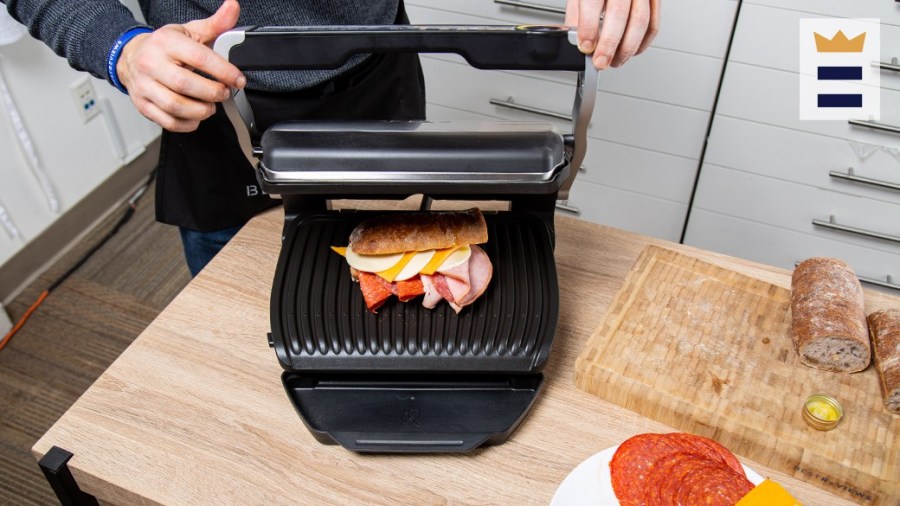
Grilling can be intimidating, especially if you’re new to it or have had some less-than-stellar results in the past. But with a little know-how, you’ll be grilling like a pro in no time. Here are a few key things to keep in mind when using a George Foreman grill:
- Cooking time: One of the great things about a George Foreman grill is that it cooks food quickly. However, it’s still important to allow enough time for the food to cook fully. Different cuts of meat and types of food have different recommended grilling times, so be sure to do your research or use a meat thermometer to ensure your food is cooked to the desired internal temperature.
- Cooking process: The George Foreman grill is a contact grill, meaning that the food is cooked on both sides at once. This can be a great time-saver, but it’s important to pay attention to the cooking process to ensure that your food is cooked to perfection. For example, when grilling steak, it’s a good idea to sear the meat over high heat first, then move it to a cooler part of the grill to finish cooking.
- Simple steps: Grilling with a George Foreman grill doesn’t have to be complicated. Simply marinate your meat in your favorite sauce or rub, and then just let the grill do the work. Keep it simple and let the natural flavors shine.
Grill Maintenance: Keeping Your George Foreman Grill in Top Condition
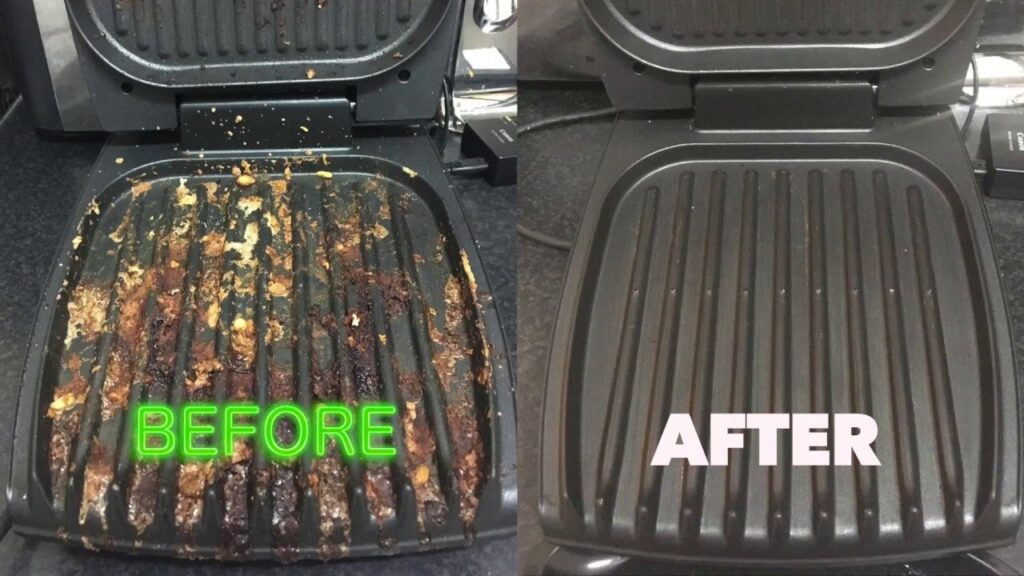
A well-maintained grill will not only last longer, but it will also give you better cooking results. Here are a few tips for keeping your George Foreman grill in top condition:
- Drip tray: Many George Foreman grills come with a removable drip tray that catches excess fat and grease. Be sure to empty the drip tray after each use to prevent grease fires and to keep your grill clean.
- Removable plates: Many George Foreman grills come with removable plates that can be taken out for cleaning. Be sure to remove and wash these regularly to keep your grill in good working order.
- Nonstick cooking spray: Before grilling, be sure to coat your grilling surfaces with a thin layer of nonstick cooking spray. This will help prevent food from sticking and will make cleaning up a breeze.
- Damp cloth: After grilling, use a damp cloth to wipe down the grilling surfaces. This will help remove any stuck-on food and will make it easier to clean the grill after it has cooled down.
Safety Tips: Using Your George Foreman Grill Safely
Grilling is a fun and enjoyable activity, but it’s important to always be mindful of safety, especially when using electrical appliances like the George Foreman grill. Here are a few basic safety precautions to keep in mind:
- Household use: Be sure to use your George Foreman grill only for its intended household use. Don’t use it to burn trash or other materials, and always be sure to follow the manufacturer’s instructions.
- Electrical appliances: When using your George Foreman grill, be sure to use it only in a dry location and follow the manufacturer’s instructions for proper use.
- Electrical shock: To prevent electrical shock, be sure to unplug your George Foreman grill when not in use and never use it in the rain.
- Indicator light: Many George Foreman grills have an indicator light that lets you know when the grill is on. Be sure to pay attention to this light and always turn off the grill when you’re finished cooking.
Delicious Dishes to Grill Up on George Foreman Grill
Grilling with a George Foreman grill isn’t just for burgers and hot dogs. There are so many delicious dishes that can be made on the grill. Here are a few ideas to get you started:
- Pork chops: Marinate pork chops in your favorite sauce and grill them to perfection on your George Foreman grill.
- Ribeye steaks: Grill up a juicy ribeye steak on your George Foreman grill for a delicious dinner.
- Skinless chicken breasts: Grill up some skinless chicken breasts on your George Foreman grill for a healthy, protein-packed meal.
- Hot dogs: Grill up some classic hot dogs on your George Foreman grill for a fun summertime treat.
- Lean steak: Grill a lean steak on your George Foreman grill for a healthy option that’s full of flavor.
- Perfect steak: Follow the tips in the “Grilling 101” section to achieve the perfect steak every time on your George Foreman grill.
- Juicy steak: Grill a juicy steak using the searing and finishing technique mentioned in the “Grilling 101” section on your George Foreman grill.
- Variety of foods: The George Foreman grill isn’t just for meat. Try grilling up a variety of vegetables, fruit, and even bread on your George Foreman grill for a delicious and healthy meal.
- Healthy foods: Grill up some healthy foods like skinless chicken breasts, lean steak, and a variety of vegetables on your George Foreman grill for a nutritious meal.
Ingredients and Tools to Elevate Your Grill Game
In addition to the right grill and good technique, there are a few key ingredients and tools that can help take your grilling to the next level. Here are a few ideas to get you started:
- Olive oil: Use a high-quality olive oil to marinate your meats and vegetables for added flavor and moisture on your George Foreman grill.
- Paper towels: Keep a roll of paper towels handy to clean up spills and wipe down the grill after use on your George Foreman grill.
- Black pepper: Add a sprinkle of freshly ground black pepper to your grilled foods on your George Foreman grill for a boost of flavor.
- Kosher salt: Use kosher salt to season your grilled foods on your George Foreman grill for a better flavor and texture.
- Meat thermometer: A meat thermometer is an essential tool for grilling, and it’s especially important when using a George Foreman grill. It will help you ensure that your food is cooked to the proper internal temperature, which is crucial for food safety. Always use a meat thermometer to check the internal temperature of your burgers to ensure they are cooked to the desired level of doneness on your George Foreman grill.
- Soy sauce: Use soy sauce to marinate meats on your George Foreman grill for an added layer of flavor.
- Vegetable oil: Use vegetable oil to coat your grill grates on your George Foreman grill to prevent food from sticking and to make cleaning up easier.
- Liquid smoke: Add a few drops of liquid smoke to your marinade or rub to give your grilled foods a smoky flavor on your George Foreman grill.
I hope these tips and techniques will help you become a grilling pro with your George Foreman grill. Whether you’re a seasoned grill master or just getting started, there’s always something new to learn and try when it comes to grilling.
Electric Grill vs. Charcoal: What’s the Best Way to Grill?
There are two main types of grills to choose from: electric grills and charcoal grills. Each has its own set of pros and cons, and the best choice for you will depend on your needs and preferences. Here are a few things to consider when deciding between an electric grill and a charcoal grill:
- Electric grill: Electric grills are a great choice for those who want an easy, hassle-free grilling experience. They are often smaller and more portable than charcoal grills, and they are easy to use – just plug in, preheat, and start grilling. Many electric grills also come with features like temperature control and removable grilling plates, making them a versatile and convenient option. However, some people argue that electric grills don’t provide the same level of smoky flavor as charcoal grills.
- Charcoal grill: Charcoal grills are a classic choice for grilling enthusiasts. They tend to be larger and more expensive than electric grills, but they are known for their ability to add a smoky flavor to grilled foods. Charcoal grills also offer more control over the temperature, allowing for precise cooking. However, they can be messy to use and require more effort to set up and maintain.
Ultimately, the best way to grill will depend on your personal preferences and needs. If you want an easy, hassle-free grilling experience, an electric grill might be the way to go. But if you’re a purist who craves that classic smoky flavor, a charcoal grill might be the better choice.
Contact Grills vs Outdoor Grills: What’s the Difference?
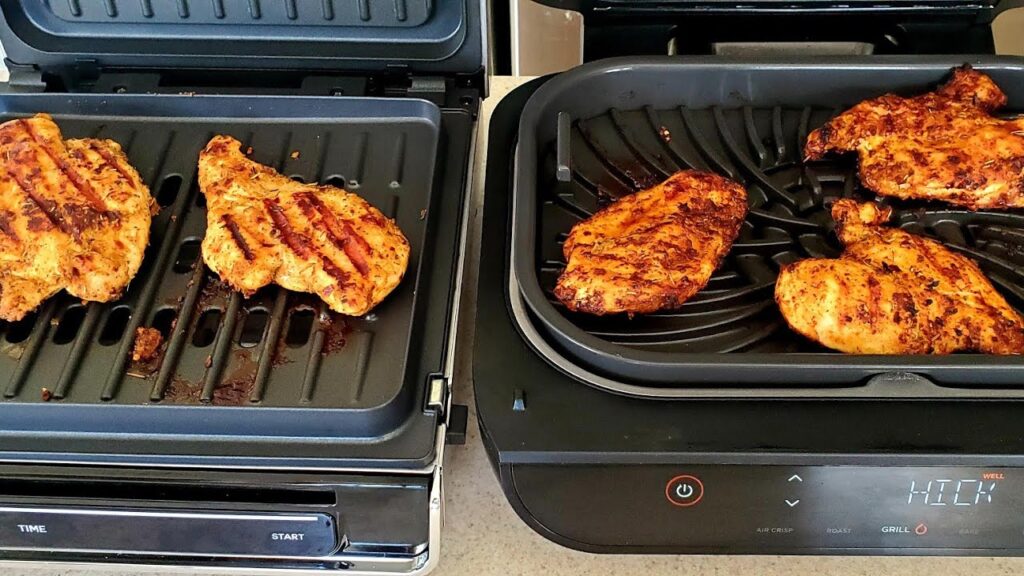
Another choice that you have to make: contact grills and outdoor grills. While they may seem similar at first glance, they actually have some key differences that make them better suited for different situations. Here’s a quick rundown of the main differences between contact grills and outdoor grills:
- Contact grills: Contact grills, like the George Foreman grill, are designed to cook food on both sides at once. They have a top and bottom cooking surface that press down on the food, creating a “contact” between the food and the heat. Contact grills are usually smaller and more portable than outdoor grills, making them a great choice for small spaces or for those who don’t have a lot of storage. However, they can’t cook as much food at once as outdoor grills, and they may not provide the same level of smoky flavor.
- Outdoor grills: Outdoor grills, also known as barbecue grills, are larger grills that are designed for outdoor use. They typically have a single cooking surface and use gas or charcoal as a fuel source. Outdoor grills are great for cooking large amounts of food at once and are known for their ability to add a smoky flavor to grilled foods. However, they can be more expensive and require more space and maintenance than contact grills.
Grilling Plates: What Are They and How Do They Affect Grilling?
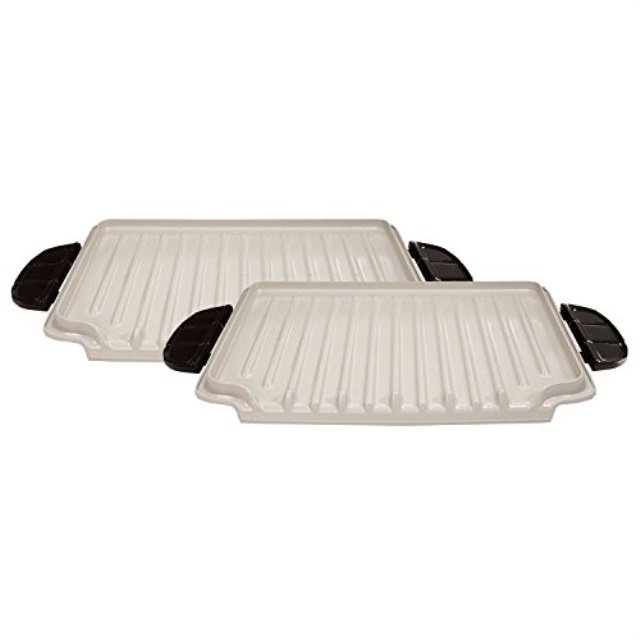
Grilling plates, also known as grates, are the surface on which you place your food to grill. They come in a variety of materials and shapes, and they can have a big impact on the overall grilling experience. Here are a few things to consider when choosing grilling plates:
- Material: Grilling plates are usually made of either metal or ceramic. Metal grilling plates, like stainless steel or cast iron, are durable and conduct heat well, making them a good choice for high-heat grilling. Ceramic grilling plates are a newer option that offers even heat distribution and is easier on the environment, but they may not be as durable as metal plates.
- Shape: Grilling plates come in a variety of shapes, including flat, slanted, and waffle-patterned. Flat grilling plates are the most common and are good for grilling a variety of foods. Slanted grilling plates are great for draining excess fat away from the food, making them a good choice for healthier grilling. Waffle-patterned grilling plates are a fun option that add a unique texture to grilled foods, but they may not be as versatile as other shapes.
- Size: Grilling plates also come in different sizes, and the size you choose will depend on the size of your grill and the amount of food you want to cook at once. Larger grilling plates will allow you to cook more food at once, but they may take longer to heat up.
Overall, the type of grilling plate you choose will depend on your personal preferences and needs. Consider the material, shape, and size when choosing grilling plates to get the best results for your grill.
Grilling in Less Time: Tips and Techniques for Speeding Up the Process
Grilling can be a time-consuming process, especially if you’re cooking for a large group of people. But there are a few tricks and techniques you can use to speed up the grilling process and get delicious results in less time. Here are a few tips for grilling in less time:
- Preheat your grill: One of the most important things you can do to speed up the grilling process is to preheat your grill. This will ensure that your grill is hot and ready to go when you start cooking, which will save you time and help you achieve better results.
- Use thin cuts of meat: Thinner cuts of meat, like chicken breasts or pork tenderloin, will cook faster on the grill than thicker cuts like t-bone steak or pork chops. Using thin cuts of meat is a great way to reduce grilling time without sacrificing flavor.
- Choose a non-stick grill: Grilling with a non-stick grill can save you time and hassle. Non-stick grills are easier to clean and are less likely to cause food to stick, which means you’ll spend less time fussing with the grill and more time enjoying your meal.
- Trim excess fat: Trimming excess fat from your meats before grilling can help reduce grilling time. Excess fat can cause flare-ups and can also cause your food to take longer to cook, so trimming it off will help speed up the process.
- Grill in batches: If you’re cooking for a large group of people, try grilling in batches rather than trying to cook everything at once. This will help you avoid overcrowding the grill, which can lead to uneven cooking and longer grilling times.
Overall, a little advance planning and the right techniques can go a long way in helping you grill up delicious meals in less time. With these tips and tricks in mind, you’ll be able to enjoy all the benefits of grilling without spending hours over the hot coals.
The Best Results with a George Foreman Grill: Tips and Techniques
A George Foreman grill is a versatile and convenient appliance that can help you achieve great grilling results. However, like any appliance, it’s important to use it properly to get the best results. Here are a few tips and techniques to help you achieve the best results with your George Foreman grill:
- Follow the manufacturer’s instructions: The first and most important step to getting the best results with your George Foreman grill is to follow the manufacturer’s instructions. This includes things like preheating the grill, using the right cooking times and temperatures, and cleaning and maintaining the grill properly.
- Use the right cooking times and temperatures: Different foods require different cooking times and temperatures to achieve the best results. Use a meat thermometer to ensure that your food is cooked to the proper internal temperature, and follow the manufacturer’s recommendations for cooking times and temperatures.
- Preheat the grill: Preheating your George Foreman grill is essential for achieving the best results. Preheating helps ensure that the grill is hot enough to cook your food properly and helps create those classic grill marks that everyone loves.
- Use the right cooking oil: Using the right cooking oil can help prevent sticking and ensure that your food cooks evenly on your George Foreman grill. A high-quality olive oil or vegetable oil is a good choice for most grilling needs.
- Clean and maintain your grill: Keeping your George Foreman grill clean and well-maintained is essential for getting the best results. Be sure to follow the manufacturer’s instructions for cleaning and maintaining the grill, and be sure to clean the grilling plates after every use to prevent any build-up of food or grease.
Overall, following these tips and techniques will help you get the best results with your George Foreman grill. With a little bit of care and attention, you’ll be able to grill up delicious meals that your friends and family will love.
If you like this article, another might also interest you: Ribeye Steak Cookbook – A Guide to Mouth-Watering Perfection!
I’m too lazy to make a video myself but I found a really good resource to illustrate my sharing on how to use a George Foreman Grill, even though it’s old as the hill. Spare 20 minutes to watch it and it might help extend your grill’s lifespan by more than 20 months.
More George Foreman Grill Recipes and Resource
How To Cook Burgers On a George Foreman Grill
How Long To Cook Steak on George Foreman Grill (Medium, Rare, Well-done)
Timing to Grill Perfect Chicken Breast on a George Foreman Grill
Grilling the Perfect Steak on a George Foreman Grill – Timing is Everything!
Cooking Pork Chops on a George Foreman Grill: A Step-by-Step Guide
How to Clean a George Foreman Indoor Outdoor Grill: A Chef’s Guide
How To Cook Steak on George Foreman Grill (Temperature, Cuts, Time)

Shara @The Bird BBQ
Shara loves to experiment with different flavors and techniques when it comes to BBQ. She has been perfecting her craft for years and loves hosting backyard BBQs with friends & family. She often comes up with creative recipes that her guests rave about.

